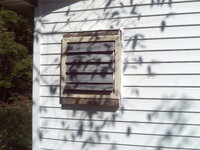The one on the left is what I’ve poured almost a hundred times. The one on the right, well, I poured over 5 ones that look like this after a couple of perfect pours.
Lead was hot, mold was hot, lead was clear of residue and like I said, I’ve poured a couple of good ones early on and they started getting like this.
I can’t seem to get my head around it. Any other problems that could cause this?

Lead was hot, mold was hot, lead was clear of residue and like I said, I’ve poured a couple of good ones early on and they started getting like this.
I can’t seem to get my head around it. Any other problems that could cause this?




